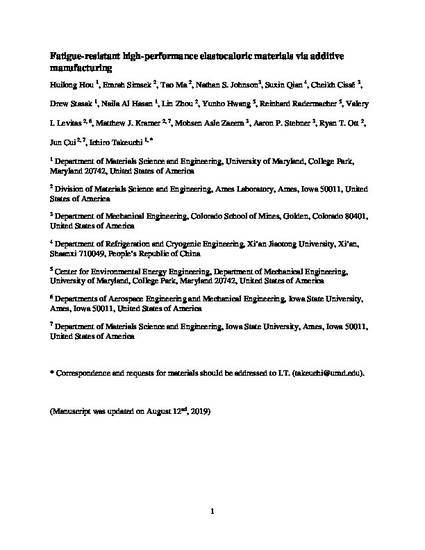
Elastocaloric cooling, a solid-state cooling technology, exploits the latent heat released and absorbed by stress-induced phase transformations. Hysteresis associated with transformation, however, is detrimental to efficient energy conversion and functional durability. We have created thermodynamically efficient, low-hysteresis elastocaloric cooling materials by means of additive manufacturing of nickel-titanium. The use of a localized molten environment and near-eutectic mixing of elemental powders has led to the formation of nanocomposite microstructures composed of a nickel-rich intermetallic compound interspersed among a binary alloy matrix. The microstructure allowed extremely small hysteresis in quasi-linear stress-strain behaviors—enhancing the materials efficiency by a factor of four to seven—and repeatable elastocaloric performance over 1 million cycles. Implementing additive manufacturing to elastocaloric cooling materials enables distinct microstructure control of high-performance metallic refrigerants with long fatigue life.
Available at: http://works.bepress.com/valery_levitas/112/

This article is published as Hou, Huilong, Emrah Simsek, Tao Ma, Nathan S. Johnson, Suxin Qian, Cheikh Cisse, Drew Stasak, Naila Al Hasan, Lin Zhou, Yunho Hwang, Reinhard Radermacher, Valery I. Levitas, Matthew J. Kramer, Mohsen Asle Zaeem, Aaron P. Stebner, Ryan T. Ott, Jun Cui, and Ichiro Takeuchi. "Fatigue-resistant high-performance elastocaloric materials made by additive manufacturing." Science 366, no. 6469 (2019): 1116-1121. DOI: 10.1126/science.aax7616. Posted with permission.